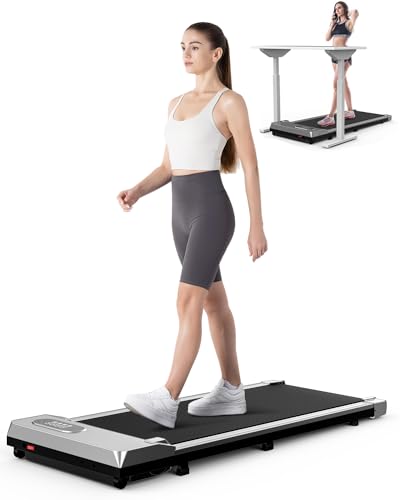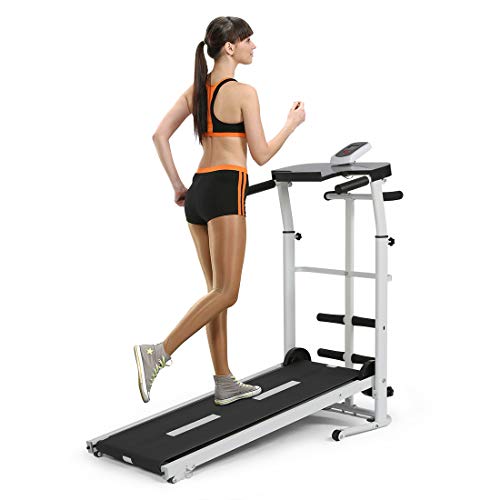Nine Things That Your Parent Taught You About Treadmill Electricity
페이지 정보

본문
 Treadmill Electricity
Treadmill ElectricityAlthough treadmills don't use as much electricity as other appliances such as air conditioners and washing machines, they still contribute to the total energy bill of your home. It's crucial to know the energy use of treadmills to help you make smart decisions about the purchase.
Find the wattage rating of your treadmill in the user's manual or on the label. Then, multiply the wattage by the number of hours you're using it per week.
Origins
Treadmill electricity is a component of your overall power usage when you are using fitness equipment. Certain factors affect how much your treadmill consumes in terms of the size of the motor and the speed at which you exercise. By shutting off your treadmill when not exercising, and maintaining it regularly to ensure optimal performance, you can lower the amount of energy that your treadmill consumes. You can also decrease the energy use of your treadmill by running on an inclined slope instead of flat.
Treadmills have a long record of being used for both recreation and work. In the beginning, they were a form of punishment for prisoners sentenced to hard labor, who would constantly walk on a large hamster wheel to power machines that ground grain or powered water pumps. However, despite their utilitarian origins they were not without faults. For instance, prisoners often suffered from heat stroke and other health issues as a consequence of the exhausting work required on machines.
Modern treadmills aren't just utilitarian machines. They can produce energy while they are being used. The treadmills like the Verde by SportsArt convert the kinetic energy generated when you walk or run and store it in a battery. Once the battery is fully charged, you can use it to power small appliances such as lighting or a fan.
The type of treadmill you choose will have a significant impact on the amount of electricity it requires. For example, treadmills for high-intensity exercises are equipped with larger motors, which require more power to move their belts. The speed of the treadmill as well as the incline setting can impact the power consumption of your treadmill. Intense exercises tend to use more energy therefore you must monitor the treadmill's usage to make sure it's not exceeding your budget.
Can you really generate enough energy from treadmill exercise to power an appliance? Yes however, it won't be very much. A skilled athlete could produce as much as 3 HP or 500-600 Watts in terms of electrical power. This is enough to power a laptop or a small fan, but not enough to run the entire household.
Motors
If your treadmill is second hand electric treadmill, it relies on motors to convert electrical energy into kinetic energy required to move the belt. The majority of treadmills with mini electric treadmill motors have two motors- a drive motor and an incline motor. Each will affect the quality of your workout and its longevity, so make sure to read the specifications listed for each part when purchasing your treadmill.
The horsepower (HP) is the most important specification for treadmill motors. This measurement indicates the amount of power a treadmill motor can generate at its highest. While it's easy to be attracted by a dazzling HP rating, consider the more accurate measure: continuous duty (CHP). It's the longest duration that a motor will perform at its peak without overheating. Treadmills with an increased CHP rating are usually more durable than ones with lower ratings, and will last longer before you need to replace them.
Take into consideration your budget and the intended usage when deciding which type of motor to purchase. In general, motors that are of greater quality and larger sizes will cost more to purchase and operate. However, this cost can be offset by saving your energy costs. If you're considering a rate plan that charges different rates at different times of the day the energy usage of the treadmill is more crucial.
It is important to ensure that your home does not share electric folding treadmill with incline power with other appliances on the same circuit. This could cause your treadmill to trip a circuit breaker, and it may cause damage to the. Instead, choose a dedicated outlet for your treadmill and ensure it's properly wired.
The motors in your treadmill utilize AC or DC electricity to rotate a crank that is driven by the belt. The AC motors are more expensive, but they offer smoother operation and faster response to changes in speed or anincline. A treadmill that has a high-quality DC motor will also reduce noise levels and maintenance needs. If you are unsure of the type of motor you should purchase, be sure to look over the warranty and compare models that have similar features.
Electronics
The electronic components of a treadmill control the operation of its motor. Potentiometers, switches and PCB electronic components are utilized to regulate the motor's speed and force. This allows the treadmill to simulate walking, jogging and running workouts. Treadmills with incline options will also alter the speed and force of the motor to simulate running uphill.
The size of the motor on the treadmill and the settings on the console can all impact the power consumption. The treadmill belt will need more power to move if the person is heavier. Treadmills that have incline levels that simulate uphill running will use more energy than treadmills without this option. The energy consumption will also increase if you increase the settings on your console.
Generally, treadmills electric treadmills use more energy when a person is at a faster speed and are working out for longer periods of time. The treadmill's calorie counter as well as other features may also increase energy consumption.
It is possible to generate enough kinetic energy from walking to charge a phone however the process will take longer than simply charging the phone with the USB cable. However, the system will work with any standard cellphone, regardless of its operating voltage.
Treadmill owners can reduce their treadmill's electricity consumption by turning off the machine when it is not in use. They can also check for signs of wear and tear on the treadmill, which could cause it to consume more power than is needed.
Homeowners can also cut down on the energy consumption of their treadmill by using it during "off-peak" hours that are typically overnight. These are the times where electricity rates are the lowest. This could save you money, especially if you are on an electricity plan that charges different rates depending on the timing of the day. Solar panels can also purchased by homeowners to generate their green compact electric treadmill with incline power. This will lessen the need for grid electricity and the fluctuating cost of electricity. In the long term this could lead to substantial savings in the financial accounts of the homeowner.
Exercise
You can walk, run or run indoors on treadmills and ellipticals. This allows you to keep fit even when conditions aren't the best. These pieces of fitness equipment require electricity to drive their motors and to operate their displays, but the amount they use can depend on how often and how long you workout. The wattage rating of the treadmill can be found in the user manual or on its label. Divide the amount by the number of days in the month and multiply it by the number of hours you use the treadmill on average per day. This will give you your daily energy consumption in kilowatts (kWh). Then multiply the number of kWh used by your utility provider's cost-per-kilowatt-hour rate to figure the total cost of operating your fitness equipment.
Other factors can impact the treadmill's power consumption, including the speed and incline setting you select. The higher speed you run at will require more energy from the treadmill's motor, and using an incline setting simulates uphill running. This also increases the energy consumption. The amount of energy consumed by the treadmill is also dependent on the weight of the user, as the motor must work harder to move the belt when it is heavier.
A treadmill that is properly maintained can also decrease the amount of energy used. Examine the lubrication on the belt frequently to make sure it's properly oiled and replace damaged or worn bearings to avoid excessive wear and tear on the motor. You may want to consider upgrading your treadmill with a more efficient motor if you plan to use it for a long period of time.
When you're done exercising, unplug or turn off your treadmill if it's connected. Leaving them plugged in and running in the background could increase your household's electricity bill, particularly in the case of a powerful treadmill. Use a smart plug to shut off your treadmill or elliptical frame automatically. If you're looking to cut down on static electricity that can build up between your body and your treadmill or elliptical machine, put a humidifier in the near your workout area to increase the relative humidity.

- 이전글The No. 1 Question That Anyone Working In Double Glazing Repair Birmingham Should Be Able To Answer 24.09.03
- 다음글What Is Windows Eastleigh And How To Utilize What Is Windows Eastleigh And How To Use 24.09.03
댓글목록
등록된 댓글이 없습니다.

